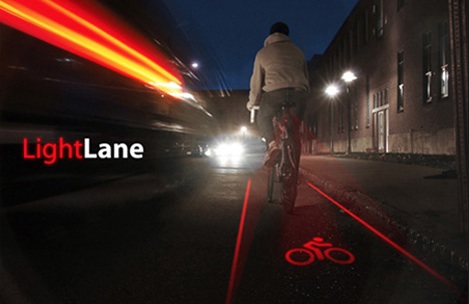 Without the right attitude and gear, biking at night can be terrifying and dangerous. Even with the right stuff, night riding is intimidating until you get used to it. But there’s another world out there at night, all alone with the scent, the sounds and your thoughts. Don’t miss out on it.
Without the right attitude and gear, biking at night can be terrifying and dangerous. Even with the right stuff, night riding is intimidating until you get used to it. But there’s another world out there at night, all alone with the scent, the sounds and your thoughts. Don’t miss out on it.
Gear is Everything
Most of your day-only glasses wont work at night, don’t even try to use them, they’re too dark. Clear is the best choice. If you don’t have a pair of clear cycling glasses, try a cheap pair of clear safety glasses. You can pick them up anywhere. Safety glasses also offer better shielding from the wind, most of them have some type of side protection. Don’t worry too much about how you look, but if you’re self-conscious about it, designer safety glasses are available too.
Bike Reflectors
If you ride a high end road or mountain bike, and even though it’s prohibited by most law, the mechanic at the shop you bought it from probably removed all of the reflectors long before you bought it. If he didn’t it’s likely that you removed them yourself, or they broke off at some point and you didn’t replace them. Get new reflectors.
The Law Says
According to the United States Consumer Product Safety Commission, bicycles sold in the United States are required to have a red rear-facing reflector; a colorless front-facing reflector; and amber or essentially colorless pedal reflectors. Bicycles are also required to have spoke-mounted side reflectors that are amber or essentially colorless for the front wheel and red or essentially colorless for the rear wheel.
More Visibility
Essential Lights
Red Blinking
White Headlights
Choices Abound
Reflective Tape
Apparel is Everywhere
Preventative Measures
Reaction Time
Slow Down
The Right Bike
If you can’t bear the thought of crashing your $3,000 road bike at night, consider a different bike. The right bike for night riding is one that is the safest. An older road bike, fatter-than-normal tires, is a good choice. Mountain bikes have the necessary stability to stay rubber-side down if you hit rocks or gravel. But there’s no reason why you cant ride your baby at night either, it’s just a personal choice, but you know how skittish horses are, road bikes are just like that when surprised.